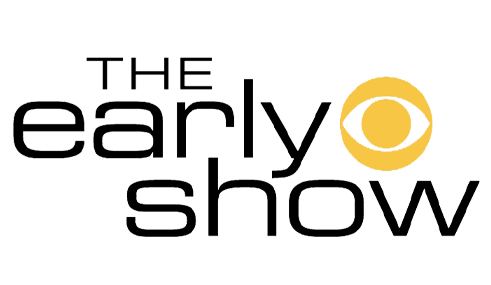August 5, 2011
It may start with a feeling of tiredness. A regular night’s sleep is no longer enough, and you wake up feeling exhausted. You may be gaining weight, even though you haven’t changed your diet and exercise program. Or you’ve decided to lose some weight, but despite carefully following a diet and exercise plan, the scale isn’t budging an ounce. Perhaps you’re struggling with a case of the blues — along with fuzzy, muddled thinking — and you’re feeling down, or finding it hard to concentrate or remember things.
It’s tempting for you and your doctor to write off these symptoms as signs of middle age, not enough exercise, lack of sleep, or stress. But for millions of us, these symptoms are actually signs of a common – but often undiagnosed – hormonal deficiency known as hypothyroidism.
The thyroid – the master gland of metabolism – is located in the neck below and behind the Adam’s apple. In hypothyroidism, the thyroid is underactive, and isn’t producing enough thyroid hormone. Without thyroid hormone, cells and tissues become starved for energy, and the body and its systems slow down.
Hypothyroidism causes a whole range of symptoms that can include:
•Extreme or unusual fatigue or exhaustion
•Depression or moodiness
•Weight gain with no change in exercise or diet
•Inability to lose weight despite proper exercise and diet
•Hair loss from the head, and sometimes the outer edge of the eyebrow
•Coarse, rough, and/or dry hair
•Pale, dry, cracked or itchy skin, chronic hives
•Constipation
•Menstrual irregularities
•Infertility or recurrent miscarriage
•Low sex drive
•Feeling cold when it’s hot, low body temperature
•High cholesterol, including levels resistant or unresponsive to drug or dietary treatment
•Brain fog, difficulty concentrating, memory problems
•Slow pulse and/or unusually low blood pressure in a non-athlete
•Irritated eyes, dryness, sensitivity to light
•Low, husky, and/or hoarse voice
•Neck enlargement, discomfort, fullness, pressure, difficulty swallowing
•Muscle and joint aches and pains
•Puffiness and swelling, especially hands, feet, eyes and face
Thyroid conditions are common – some experts estimate that close to 60 million Americans have a thyroid problem, and the majority are hypothyroid. Unfortunately, the vast majority of people with thyroid disease also have not been diagnosed or treated.
When diagnosing hypothyroidism, your doctor should listen carefully to your description of your symptoms. At the same time, in addition to taking a complete personal and family history, your doctor should perform a thorough clinical evaluation. In this exam, the practitioner should:
· Test your Achilles reflex – the doctor taps on your Achilles tendon along the back of your heel, which
causes your calf muscle to contract and your foot to jerk down. A slower than normal reaction suggests
hypothyroidism.
· Measure your heart rate and take a blood pressure reading
· Palpate your neck and thyroid area, to feel for enlargement of the thyroid, or any lumps and nodules
· Observe your hair and skin, and look for any swelling or puffiness in face, hands and feet
Based on these examinations, some doctors can already make a fairly accurate diagnosis. But it is at this point that they vary in how they proceed.
Some doctors routinely perform a blood test, known as the Thyroid Stimulating Hormone (TSH) test. This test measures levels of TSH, a pituitary hormone, to assess the thyroid’s function. While many conventional practitioners believe this test to be the “gold standard” for diagnosing thyroid disease, they disagree about how to interpret the results. On one side are the laboratories and doctors who follow the older TSH normal range of approximately 0.5 to 5.0. (Low levels of TSH are indicative of hyperthyroidism, and higher TSH levels are indicative of hypothyroidism.)
On the other side of the debate are the doctors who adopted new guidelines recommended by the American Association of Clinical Endocrinologists in 2003. These new guidelines set the TSH normal range from 0.3 to 3.0. Unfortunately, this disagreement among practitioners leaves the estimated 20 million or more Americans with a TSH of between 3.0 and 5.0 in limbo. Their ability to get properly diagnosed and treated depends on finding a doctor and laboratory that follow the new guidelines.
Other practitioners believe that a TSH test alone is not sufficient for diagnosis, and they conduct additional tests such as Free T4 and Free T3 to evaluate specific thyroid hormone levels. Some doctors run antibody tests to identify autoimmune thyroid disease. Some doctors will treat patients based on abnormalities in these tests, even when TSH is normal.
Finally, there are holistic and integrative practitioners who believe that patients with a high index of suspicion for thyroid disease, – for example, they have a combination of symptoms, clinical signs, and/or family history – should receive a therapeutic trial of a thyroid hormone replacement. These doctors believe that even if TSH and other test results show “normal” thyroid function, the thyroid may still be underactive. According to these practitioners, a low dose of thyroid hormone may safely reduce or eliminate symptoms in many patients. Since these practitioners have found that a low dose of thyroid hormone is safe for most of their patients, their philosophy is that they owe it to symptomatic patients to conduct such a trial.
If you have hypothyroidism symptoms or risk factors – family history, neck trauma, radiation exposure to the neck, cigarette smoking are just a few – be sure to have a thorough evaluation by a practitioner who not only understands thyroid disease, but recognizes that thyroid patients are more than just numbers on a lab test, and puts that into practice.
(March 2006)
Mary Shomon is an internationally-known thyroid patient advocate, and is author of a number of best-selling health books, including Living Well With Hypothyroidism and The Thyroid Diet. Since 1997, she has run the Internet’s most popular thyroid patient sites: About.com Thyroid Site and Thyroid-Info.com
Illustration of the thyroid is public domain, from the NIH website,
and can be used at the DrHotze.com site.
"*" indicates required fields
Since 1989, Hotze Health & Wellness Center has helped over 33,000 patients get their lives back using bioidentical hormones that restore hormones to optimal levels, strengthen immune systems, and increase energy levels. Our treatment regimen addresses the root cause of hypothyroidism, adrenal fatigue, menopause, perimenopause, low testosterone, allergies, and candida.
Led by best-selling author, radio host and leading natural health expert, Steven F. Hotze, M.D., our medical team has over 100 years’ combined medical experience backed by a staff of nearly 100 caring professionals who provide an environment of hope and extraordinary hospitality for each of our patients, who we call our guests. It is our deepest desire to help you obtain and maintain health and wellness naturally so that you may enjoy a better quality of life, pure and simple.
Do you want to live a healthy, happy, purpose-driven life? Do you want to restore your health so that your loss of energy, weight gain, joint pain, depression and lack of drive or motivation won’t hold you back from achieving your personal and professional goals?
Dr. Steven Hotze wants that for you, too. In fact, in his powerful and passionate video entitled, “What I Believe”, Dr. Hotze shares how his Christian worldview and pivotal experiences have ignited a deep desire to offer the message of hope and optimal health to all who need to hear it.









At Hotze Health & Wellness Center, our doctors are changing the way women and men are treated through the use of bioidentical hormones. Our natural treatments have helped over 33,000 individuals with hypothyroidism, adrenal fatigue, menopause, perimenopause, low testosterone, allergies, candida, detoxification and nutritional deficiencies.
Meet our doctors"I went from feeling tired and foggy to to getting my energy and vitality back!”
Leave a Reply